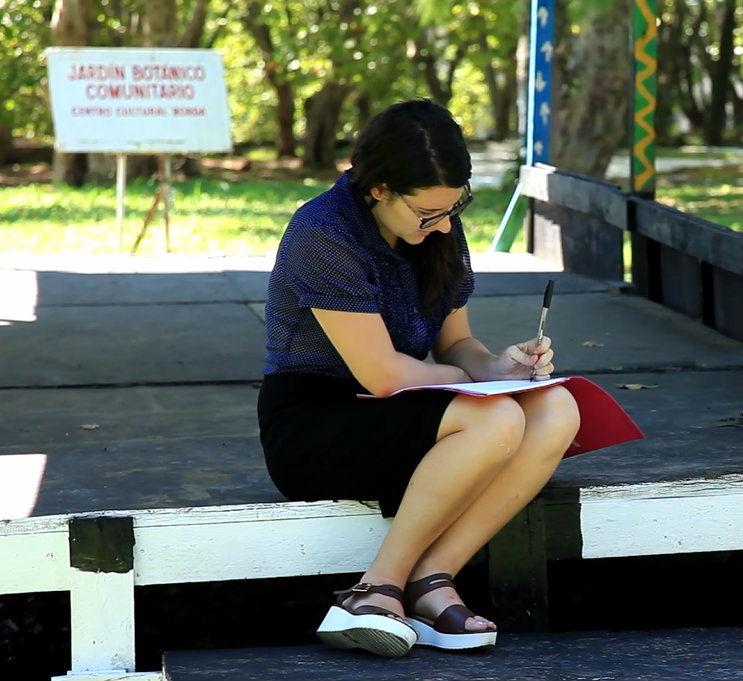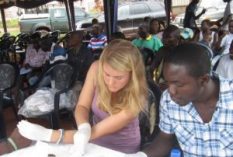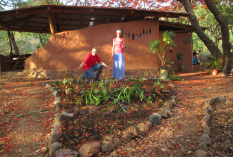When I started out as a travel writer, I felt as though Christmas had come early. There I was, clutching a ticket for a two-week all expenses paid trip to Japan – JAPAN! – and I hadn’t paid for it. Not a penny.
This feeling of wondrous good fortune persisted for many years and I’m writing this as I come out the other side of a decade-long stint as a freelance travel writer – a good time to be sharing some insider secrets.
The truth is, though it’s a bit glamorous and you get to travel the world for free, it’s also hard work, fiercely competitive and you won’t earn much. There are many ways into this life and many types of travel writing: first-person narratives, short practical round-ups, guidebooks and more.
I pretty much fell into the job of writing features for newspapers, magazines and online media. After a few years in book publishing, a backpacking stint in India and Nepal, six months of TEFL teaching in the Republic of Georgia and some miserable months of aimless temping, I signed up for a 13-week journalism course at the London College of Communications. I loved it. I’d recommend formal study of some kind as it teaches you a) how to pitch an idea, b) in the context of travel, the difference between an idea and a destination and c) how to write in a lively and interesting way to a specific brief.
After the course, I landed a job as a junior travel writer for a magazine – and then owing to a strict ‘no-jeans’ dress policy, quit on the first day. (Displaying the independent spirit needed to forge a path in travel, or so I like to think.) I then pitched three non-travel ideas to a health magazine and by some miracle the editor took all three. I saw this as a good omen and began freelancing – bumbling along at first and then with greater confidence but always with a ferocious enthusiasm. In my second year, I took a chance on travel.
The question I get asked most is: how does it work? Well, for starters you need an idea, an original one that has not been written about elsewhere. You also need to match your own interests travel story wise, with the editorial interests of the publication you are pitching to.
As a beginner, it’s worth mining trips you’ve already taken (recently). But having had a good time in Shangri-La isn’t enough: you need an angle, a focus, something new with which to temp an editor saturated with pitches. As a writer, you need to be able to draw the reader into your feature right from the word ‘go’, and you need to make sure your facts are straight.
‘I went to India and it is an amazing country,’ isn’t a saleable idea. ‘I went to India and trekked to Meghalaya’s Living Root Bridges, the world’s first entirely naturally made bridge’ is. (Or it was when I wrote about it, back in 2010.)
What is truly compelling for you? What do you love doing? What matters to you? Tap into your natural-born passions and enthusiasms. This will be felt. People connect to authenticity and liveliness. Create a niche for yourself. And whatever your idea is, it needs to be something anyone can do, reasonably easily.
Before you can expect to exert any kind of leverage as a travel journalist, you need to show that you can write and have indeed travelled a bit. Bear in mind that travel writing isn’t just about far-flung travel, it’s equally about unearthing gems closer to home.
This is where having a website and your own blog come in: it’s a way of showcasing what you’ve been up to and your articles and photos. I don’t endorse writing for free unless it’s for a socially or environmentally minded publication operating on a shoestring budget. To avoid getting stuck in the non-paying ghetto think creatively and approach lesser-known publications. They will have fewer people pitching to them – and may pay reasonable rates. Do your research, both online and at the newsagent. Another source of ideas, especially once you’ve started to get the hang of it, is the travel PR: this is someone who is paid to market a tour operator, adventure travel out or destination (be it city, region, national park, tourist hotspot or country). They rely on, court and host journalists so as to get their client mentioned in the press. Tourist boards also host group press trips for journalists so it’s worth getting on their radar too.
There are pros and cons to this sort of travel. On the plus side, all the logistics and flights are handled for you; the downside is that you’re shepherded about with a bunch of journalists on a tight schedule which doesn’t allow for any real sense of discovery, serendipity or meaningful interaction with the locals.
In order to get a trip hosted with any of the above, you need to have secured a firm commission with an editor to write a feature. It’s best to email a very small paragraph, with a catchy subject heading, explaining your idea. Editors are inundated with emails for story pitches so don’t take rejection personally. To be a freelance writer – let alone travel scribe – you need to develop the hide of a rhino.
Commission in hand, you may need to negotiate a free flight, train travel (or any kind of transport to your destination) if the PR hasn’t done so for you. This is much easier out of season and when you are writing a feature for a publication with a sizeable readership, say a national newspaper or glossy travel magazine. When you’re on your trip, take copious notes and photographs. Think of other potential story angles or ideas. Talk to the locals and get quotes from them that you may be able to use in your story.
 So here you have it, the bare bones of travel writing. One final thing: I would urge you to focus on travelling in responsible ways: ie with smaller, ethical tour operators who give back to the locals and who care about their impact on the environment.
So here you have it, the bare bones of travel writing. One final thing: I would urge you to focus on travelling in responsible ways: ie with smaller, ethical tour operators who give back to the locals and who care about their impact on the environment.
If you are travelling independently, do make an effort to stay at ‘green’ lodges, guesthouses or hotels, eat food that has been locally sourced in restaurants that employ local people and shop in markets. In short, embrace the ‘small is beautiful’ ethos and do your bit for planet and people.
Need help getting started? Jini can help you to develop your writing and offer one-to-one coaching on getting into print.
For more info email: [email protected]
Follow Jini on Twitter: @jini_reddy











